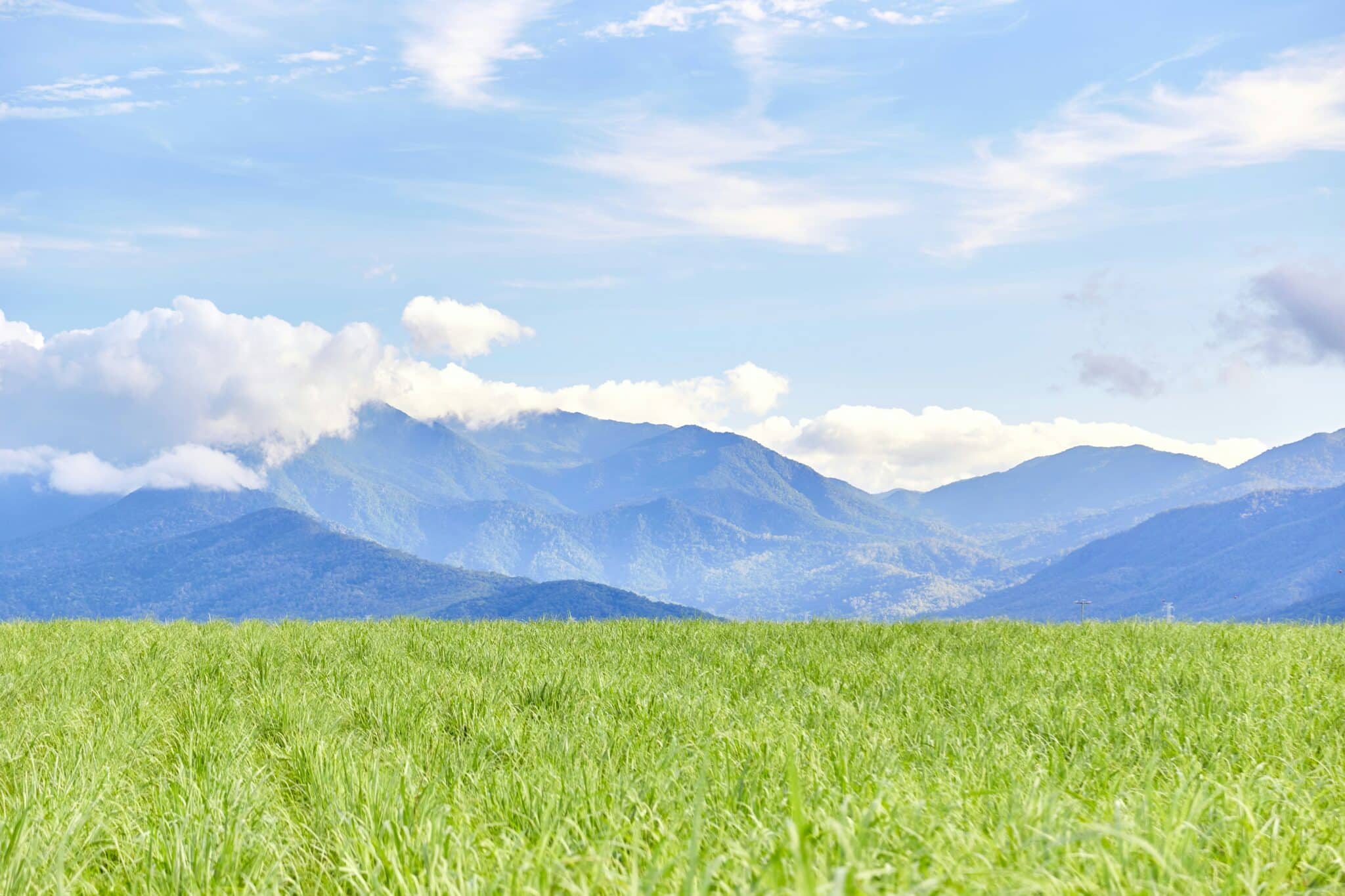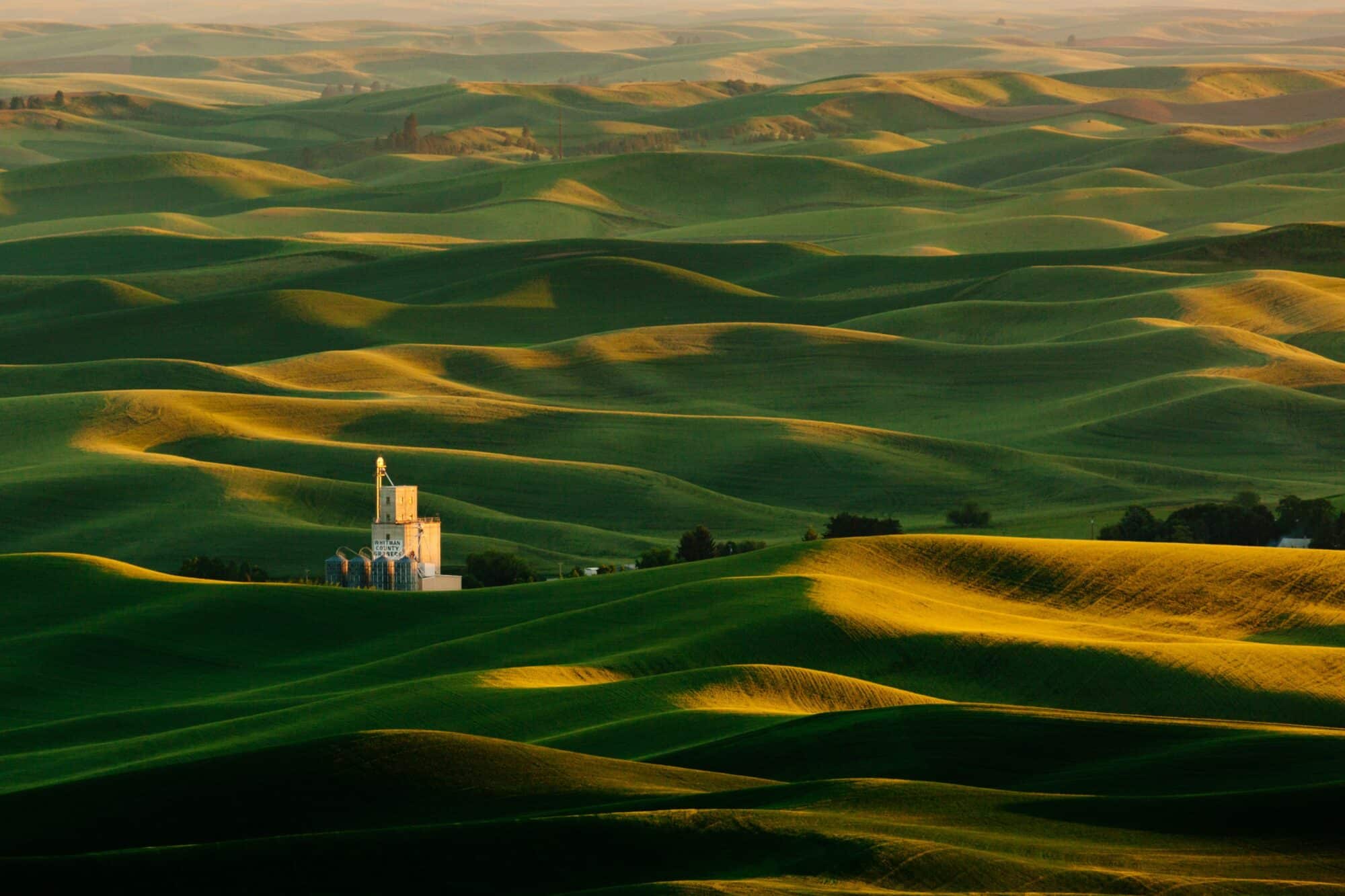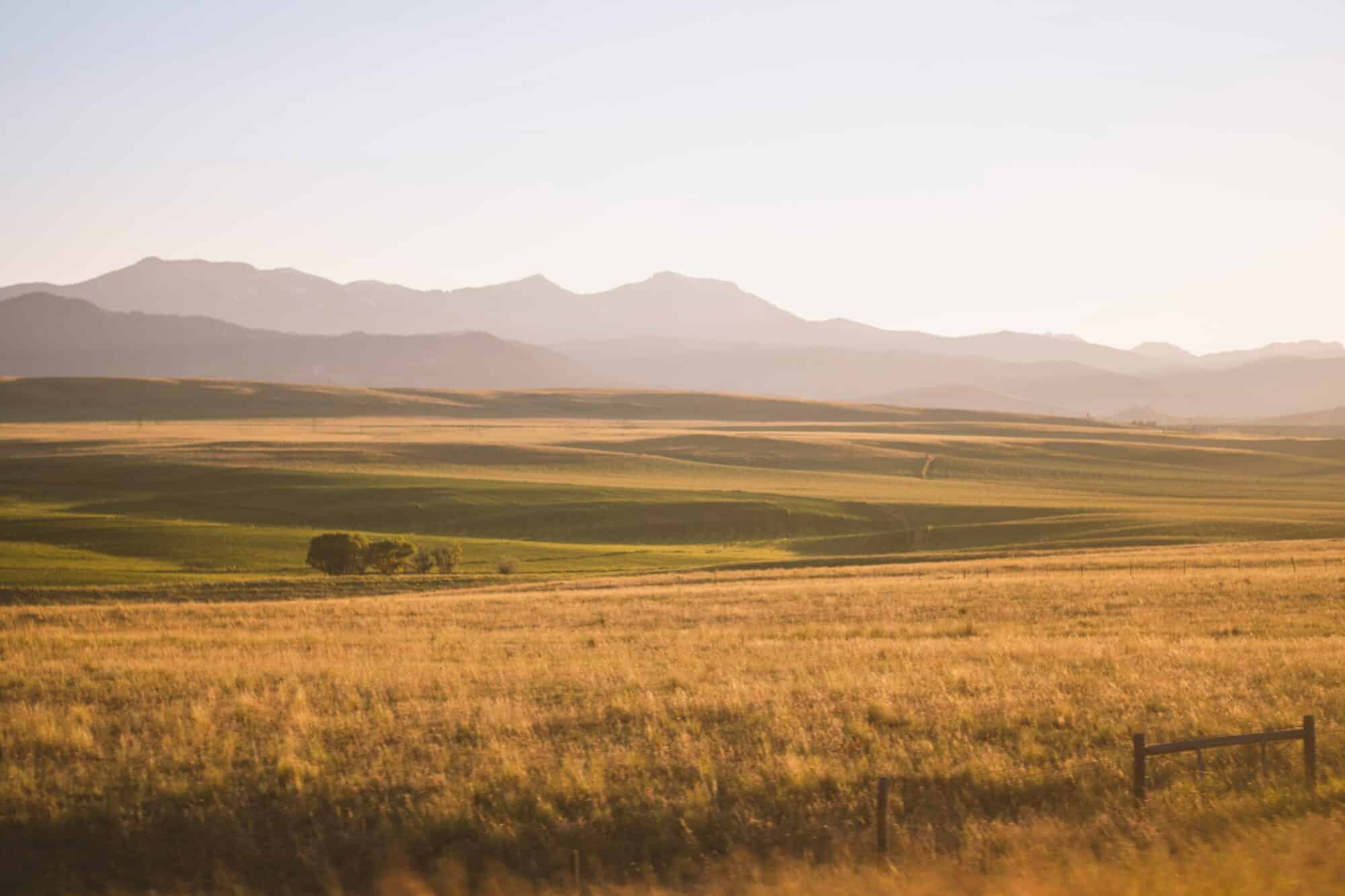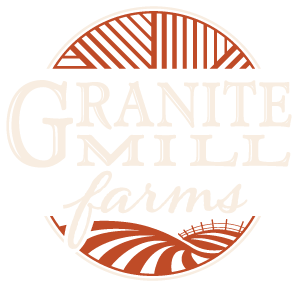
From the sheltered river valleys of the Pacific Northwest to the wide, fertile prairies of the Northern Plains, our corner of the continent is home to some incredible farmland. Located in Northwestern Montana, Granite Mill Farms is uniquely situated with central access to many of these premier wheat growing regions, allowing us to source top-notch grains for our sprouted goods. Let’s take a tour!
The Palouse

In Eastern Washington and Northern Idaho, the Palouse stretches from the confluence the Snake and Columbia rivers to the forested foothills of the Rockies. These grasslands harbor some of the most picturesque wheat fields in the nation. Undulating hills, reminiscent of sand dunes, roll for miles; sometimes in the bright greens of new growth, sometimes in the golden hues of harvest. The unique landscape is the result of windblown soils known as loess. This mineral rich earth combined with a semi-arid climate makes an ideal setting for wheat cultivation. Soft white wheat, the “cashmere of wheat”, is particularly ubiquitous here.
To Visit: Just north of the Palouse is the city of Spokane, with excellent airport access. From the bustle of the “Inland Empire”, head south to find quiet scenic drives and sleepy country towns. Even the Washington State waterfall, majestic Palouse Falls, is seldom crowded.
Nearby Destinations: Hells Canyon National Recreation Area, Lake Coeur d’Alene, Spokane’s Riverfront Park.
The Golden Triangle

Montana is well-known for its wheat production, but perhaps its crowning agricultural glory is the roughly triangular area between Great Falls, Conrad, and Havre. Here, just east of the Rocky Mountains, one can find seemingly endless horizons of golden fields. The sticky soil, Montana’s famous “gumbo” mud, owes its existence to very fine silts that trap and hold moisture. While a challenge for equipment, the moisture retention is key during the hot, dry summers. This combination of predictable moisture and the hardening effect of high heat provides excellent conditions for high-protein wheats. In the words of Doreen Stevens (NY Times’ “52 Places to Love“)- “Everyone talks about Big Sky Country, but it’s the land. You could see forever.”
Visit: Great Falls is the closest serviced airport. Be sure to check out some if the local history at the C. M. Russell Museum or in Fort Benton, a frontier settlement on the Missouri River.
Nearby Destinations: Glacier National Park, Montana State Capitol, Bob Marshall Wilderness area
The Okanagan

In western North America, the complex mountain geography often creates microclimates. Moisture coming from the Pacific is dumped heavily on the windward sides of mountains, leaving some areas virtual rainforests and others quite dry. Long river valleys, protected by the mountains from the sweeping weather systems so common east of the divide, enjoy a certain mildness of climate, despite their northerly latitude. The Okanagan Valley, straddling the British Columbia/Washington border, is an excellent example of this phenomenon. Okanagan Lake contributes further to the mild climate by acting at a thermal regulator. The resulting cool winters and hot summers support a strong agricultural production of fruit and cereal grains. In fact, the area is probably best known for its Canadian wine production; being home to nearly 90% of the province’s wineries. Many ancient grains like einkorn, spelt, and emmer can be found thriving here, fed by clean mountain snowmelt.
Visit: Kelowna, B.C. is the region’s primary hub. Head north towards Armstrong and Salmon Arm, or south towards the US border and Omak, WA. Either route is guaranteed to be scenic!
Nearby Destinations: Big White Ski Resort, North Cascades National Park, Mt. Revelstoke National Park.



